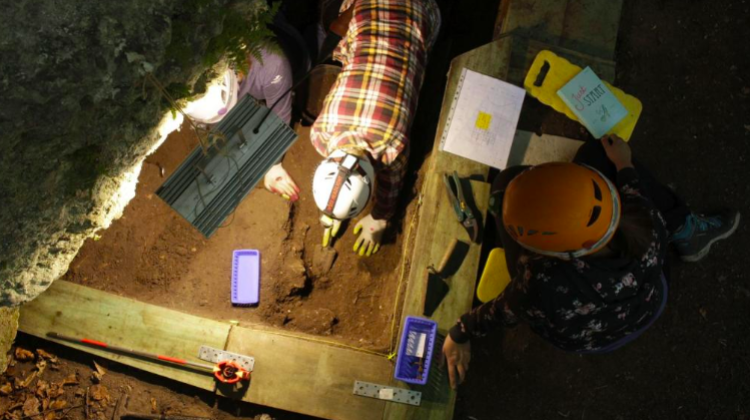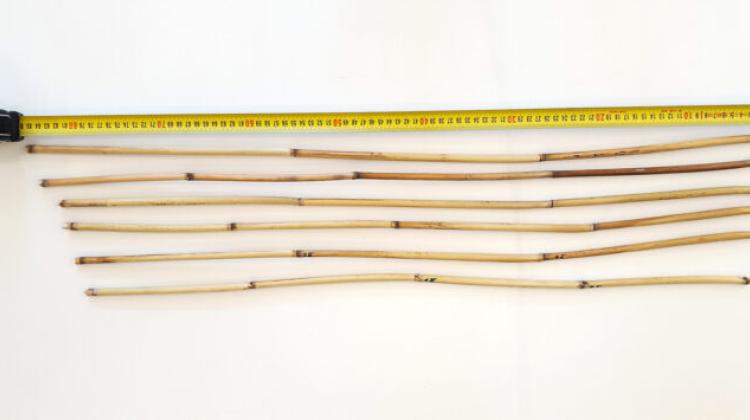Małopolska/ Archaeologists explore a cave inhabited for thousands of years
 Photo: J. Wiejacki
Photo: J. Wiejacki
Hunters and gatherers lived there over a dozen thousand years ago, and 3,000 years ago farmers moved in. They were attracted by a nearby flint source. Now archaeologists are exploring the Perspektywiczna Cave in the Kraków-Częstochowa Upland (Małopolska).
"The uniqueness of the Perspektywiczna Cave is that it was unknown to the scientific community, speleologists, and even the local population, so we have the opportunity to examine completely intact sediments with modern methods" - says head of excavations Dr. Magdalena Sudoł-Procyk from the Institute of Archaeology, Nicolaus Copernicus University in Toruń.
Kraków-Częstochowa Upland is known for its many caves, including those in which people lived for thousands of years. Some of them were dug up in the 19th century, and by now most of the known caves have been explored. But the Perspektywiczna Cave in the Udorka Valley was discovered by chance only in 2012.
According to Dr. Sudoł-Procyk, the most valuable discovery to date are the layers with preserved traces of hunters and gatherers presence from about a dozen thousand years ago - from the Ice Age. These traces include remnants of fires and numerous flint tools.
"They allow for a fuller reconstruction and understanding of cultural changes after the appearance of anatomically contemporary humans in this region" - she adds.
Archaeologists have found a high-quality flint outcrop near the cave - hence the presence of people for thousands of years. The first inhabitants of the present Polish territories made tools from this material on a large scale. Those tools were used for hunting and for bone, leather and wood processing. Researchers have evidence that flint was mined here in prehistory.
"People came to this place because of the presence of very good quality flint, and they used the cave as a shelter. The cave was also used in the Mesolithic, in the period immediately after glaciation, about 10,000 years ago" - describes the researcher.
Much later, from the first millennium BC, the cave began to be used in a completely different way. It was adapted for residential and commercial purposes. In the the Middle Ages the cave was forgotten, as evidenced by fragments of late medieval pots lying on the surface.
So far, research has been focused around the cave entrance, where man left most traces. Archaeologists have ventured inside approx. 6 m from the entrance to the cave.
This year`s excavations began in early July. Around the entrance to the cave, archaeologists found traces from between the 18th century and the beginning of the 20th century in the form of a ditch strengthened with large rocks, and they documented numerous animal bones in the sediments. They also discovered fragments of ceramic vessels - mainly medieval and modern ones, probably used to store and prepare food.
According to archaeologists, there could be another unknown cave near the Perspektywiczna Cave. The results of geophysical work carried out in the spring appear to indicate that. "Research focused on finding the entrance is currently underway" - reveals the archaeologist.
Dr. Magdalena Sudoł-Procyk explains why it took archaeologists so long to explore the cave and its surroundings. According to the specialist, the Udorka Valley differs significantly from other valleys in the Kraków-Częstochowa Upland. "The valley remains mostly unused for agriculture, the area is densely forested, which probably hindered the search for archaeological sites" - she says.
Archaeological work is being carried out slowly due to the extraordinary meticulousness of research. "We are aware that such sites with deep layers are rare - hence our care not to miss any detail" - the archaeologist says.
Research in the cave is financed with two grants awarded by the National Science Centre.
PAP - Science in Poland, Szymon Zdziebłowski
szz/ agt/ kap/
tr. RL
Przed dodaniem komentarza prosimy o zapoznanie z Regulaminem forum serwisu Nauka w Polsce.

















